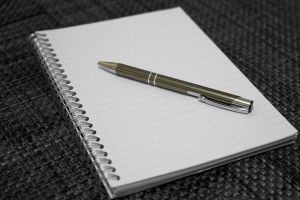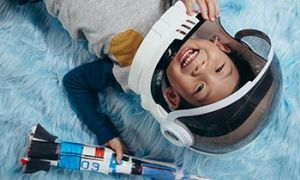The Early Years Learning Framework (EYLF) planning cycle is a structured process that helps educators plan, document, respond to, and support children’s learning. The following article provides information and examples of each of the 5 stages of the EYLF planning cycle.
5 Stages Of The Planning Cycle
Here are the five key stages of the planning cycle:
-
Observe: Collect information about the child’s current knowledge, strengths, interests, skills, and culture. Ensure observations are meaningful and include the voices of children and families.
-
Assess: Analyze and interpret the child’s learning. Understand what and how the child is learning, and link this to the EYLF outcomes.
-
Plan: Design learning experiences based on observations and assessments. Collaborate with children and families to create responsive and enriching plans.
-
Implement: Deliver learning activities that support the child’s learning and wellbeing. Ensure activities reflect play-based learning and allow for child agency.
-
Evaluate: Reflect on the effectiveness of observations, planning, and teaching strategies. Use reflections to inform practice changes and extend learning.
This cycle ensures that educators continuously improve their teaching practices and provide high-quality early childhood education.
Stage 1: Observe
In the first stage of the EYLF planning cycle, Observation is key. This involves:
-
Gathering Information: Collect detailed information about each child’s current knowledge, strengths, interests, skills, and cultural background. This can be done through various methods such as anecdotal records, learning stories, photographs, and work samples.
-
Engaging with Children and Families: Include the voices of children and their families in the observation process. This helps in understanding the child’s context and provides a holistic view of their development.
-
Being Intentional: Observations should be purposeful and focused on understanding the child’s learning and development. Look for patterns, interests, and areas where the child might need more support or challenge.
-
Documenting Observations: Keep detailed and organized records of observations. This documentation will be crucial for the next stages of the planning cycle.
By thoroughly observing, you can gain valuable insights into each child’s unique learning journey, which will inform your planning and teaching strategies.
Stage 2: Assess
In the second stage of the EYLF planning cycle, Assessment involves analyzing and interpreting the information gathered during observations. Here’s how to approach this stage:
-
Analyze Learning: Examine the observations to understand what the child is learning, how they are learning, and why they are learning in that way. Look for patterns, strengths, and areas for growth.
-
Link to EYLF Outcomes: Connect your findings to the Early Years Learning Framework (EYLF) outcomes. This helps in identifying how the child’s learning aligns with the framework’s goals and objectives.
-
Consider the Whole Child: Take into account the child’s social, emotional, physical, and cognitive development. This holistic view ensures that all aspects of the child’s growth are considered.
-
Collaborate with Families and Colleagues: Share your assessments with families and other educators. Their insights can provide additional context and support a more comprehensive understanding of the child’s development.
-
Document Findings: Keep detailed records of your assessments. This documentation will be essential for planning and implementing targeted learning experiences.
By thoroughly assessing the observations, you can create a clear picture of each child’s learning journey, which will guide your planning and teaching strategies.
Stage 3: Plan
In the third stage of the EYLF planning cycle, Planning involves designing learning experiences based on the observations and assessments. Here’s how to approach this stage:
-
Set Goals: Based on your assessments, set specific, measurable, achievable, relevant, and time-bound (SMART) goals for each child’s learning and development.
-
Design Learning Experiences: Create activities and experiences that are responsive to the child’s interests, strengths, and needs. Ensure these experiences are engaging, challenging, and supportive of the child’s learning journey.
-
Incorporate Play-Based Learning: Plan activities that encourage exploration, creativity, and problem-solving through play. Play-based learning is central to the EYLF and supports holistic development.
-
Collaborate with Children and Families: Involve children in the planning process by considering their ideas and preferences. Engage families by sharing plans and seeking their input to ensure the learning experiences are culturally relevant and meaningful.
-
Prepare the Environment: Set up the learning environment to support the planned activities. Ensure it is safe, inviting, and conducive to exploration and learning.
-
Document the Plan: Keep detailed records of your plans, including the goals, activities, and expected outcomes. This documentation will be useful for tracking progress and making adjustments as needed.
By thoughtfully planning, you can create enriching and supportive learning experiences that cater to each child’s unique needs and interests.
Stage 4: Implement
In the fourth stage of the EYLF planning cycle, Implementation involves putting your plans into action. Here’s how to approach this stage:
-
Set Up the Environment: Arrange the learning environment to support the planned activities. Ensure it is safe, inviting, and conducive to exploration and learning. Use materials and resources that are relevant to the children’s interests and developmental stages.
-
Engage with Children: Actively participate in the learning experiences with the children. Facilitate their play and exploration, ask open-ended questions, and provide support and encouragement as needed.
-
Adapt as Needed: Be flexible and responsive to the children’s needs and interests. If an activity isn’t working as planned, be prepared to modify it or try a different approach. Follow the children’s lead and allow for spontaneous learning opportunities.
-
Promote Child Agency: Encourage children to make choices and take ownership of their learning. Provide opportunities for them to initiate activities, solve problems, and express their ideas and creativity.
-
Document the Process: Keep records of the activities and the children’s engagement and responses. Take notes, photos, and videos to capture significant moments and learning outcomes.
-
Reflect in Action: Continuously reflect on the effectiveness of your teaching strategies and the children’s learning experiences. Use these reflections to make immediate adjustments and improvements.
By effectively implementing your plans, you can create a dynamic and supportive learning environment that fosters each child’s growth and development.
Stage 5: Evaluate
In the final stage of the EYLF planning cycle, Evaluation involves reflecting on the effectiveness of your observations, planning, and teaching strategies. Here’s how to approach this stage:
-
Reflect on Outcomes: Consider how well the learning experiences met the goals set during the planning stage. Reflect on the children’s engagement, learning, and development.
-
Gather Feedback: Seek input from children, families, and colleagues about the learning experiences. Their perspectives can provide valuable insights into what worked well and what could be improved.
-
Analyze Documentation: Review the records, photos, videos, and notes taken during the implementation stage. Look for evidence of learning, progress, and areas that may need further support.
-
Identify Strengths and Areas for Improvement: Recognize what strategies and activities were successful and identify any challenges or areas that need adjustment.
-
Plan for Future Learning: Use your reflections to inform future planning. Adjust your strategies and activities based on what you have learned to better support the children’s ongoing development.
-
Document Reflections: Keep detailed records of your reflections and evaluations. This documentation will help you track progress over time and make informed decisions about future planning and teaching.
By thoroughly evaluating your practice, you can continuously improve your teaching strategies and provide high-quality early childhood education that supports each child’s unique learning journey.
Further Reading
Different Types Of Observation Methods
Observations in Childcare
Descriptive Words For Documentation, Observations and Reports
Writing Observations For Babies
EYLF Learning Outcomes Version 2.0
Free EYLF Version 2.0 Posters and Cheat Sheets
References:
Documentation Best Practices, Teaching Strategies
Observing, Documenting and Assessment, NAEYC
EYLF Planning Cycle, ACECQA







 Here is the list of the EYLF Learning Outcomes that you can use as a guide or reference for your documentation and planning. The EYLF
Here is the list of the EYLF Learning Outcomes that you can use as a guide or reference for your documentation and planning. The EYLF The EYLF is a guide which consists of Principles, Practices and 5 main Learning Outcomes along with each of their sub outcomes, based on identity,
The EYLF is a guide which consists of Principles, Practices and 5 main Learning Outcomes along with each of their sub outcomes, based on identity, This is a guide on How to Write a Learning Story. It provides information on What Is A Learning Story, Writing A Learning Story, Sample
This is a guide on How to Write a Learning Story. It provides information on What Is A Learning Story, Writing A Learning Story, Sample One of the most important types of documentation methods that educators needs to be familiar with are “observations”. Observations are crucial for all early childhood
One of the most important types of documentation methods that educators needs to be familiar with are “observations”. Observations are crucial for all early childhood To support children achieve learning outcomes from the EYLF Framework, the following list gives educators examples of how to promote children's learning in each individual
To support children achieve learning outcomes from the EYLF Framework, the following list gives educators examples of how to promote children's learning in each individual Reflective practice is learning from everyday situations and issues and concerns that arise which form part of our daily routine while working in an early
Reflective practice is learning from everyday situations and issues and concerns that arise which form part of our daily routine while working in an early Within Australia, Programming and Planning is reflected and supported by the Early Years Learning Framework. Educators within early childhood settings, use the EYLF to guide
Within Australia, Programming and Planning is reflected and supported by the Early Years Learning Framework. Educators within early childhood settings, use the EYLF to guide When observing children, it's important that we use a range of different observation methods from running records, learning stories to photographs and work samples. Using
When observing children, it's important that we use a range of different observation methods from running records, learning stories to photographs and work samples. Using This is a guide for educators on what to observe under each sub learning outcome from the EYLF Framework, when a child is engaged in
This is a guide for educators on what to observe under each sub learning outcome from the EYLF Framework, when a child is engaged in The Early Years Learning Framework describes the curriculum as “all the interactions, experiences, activities, routines and events, planned and unplanned, that occur in an environment
The Early Years Learning Framework describes the curriculum as “all the interactions, experiences, activities, routines and events, planned and unplanned, that occur in an environment


